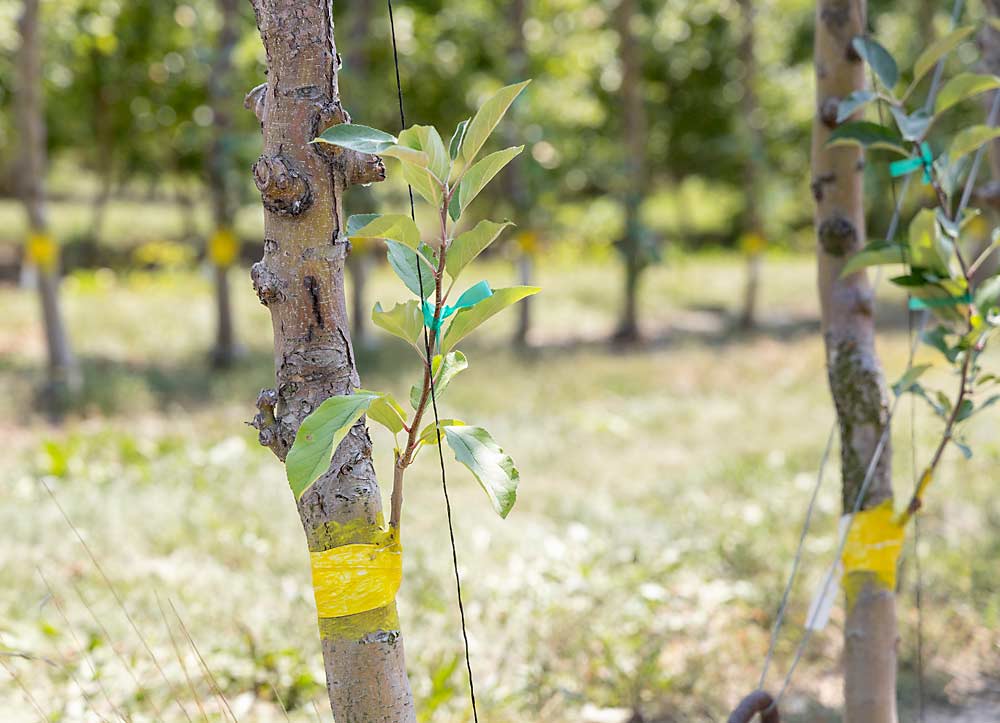
Umlor Orchards in Conklin, Michigan, is trying something fairly unusual among Michigan apple growers: side grafting. Unlike top grafting, this technique reduces the original canopy over time while the new scion grows into production.
Growers got a look at Roger Umlor’s side-grafted block last summer, during the Michigan Pomesters’ Ridgefest tour. The 8-acre block, planted in 2015, originally was Pink Lady on Nic.29, spaced 11 feet by 3 feet. But the Pink Lady apples struggled to thrive in Michigan’s relatively short growing season; they were thin-skinned, had trouble sizing and their packouts were poor. Umlor decided to graft them over to Gale Gala in spring 2022. He chose Gale Gala because his original Gala blocks are aging out and the sport colors well, has firm fruit and has good packouts.
Umlor went with grafting over rather than replanting because it costs less and reaches production faster. The trees are already in the ground and the support structure already established, he said.
Umlor hired professional grafter Robbi VanTimmeren, who convinced him to try the side-grafting technique, which is relatively new in Michigan. She said top grafting — cutting the tree off above the first whorl of branches and inserting the new scion on top of the remaining shank — is more typical.
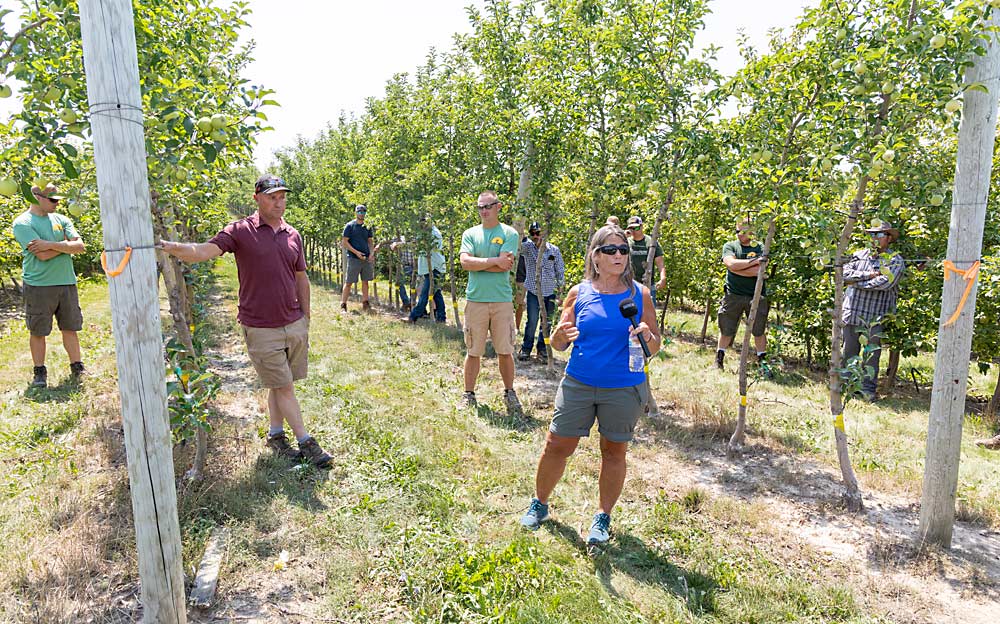
With a side graft, VanTimmeren cuts into the side of the tree and places the scion at an angle, then crews gradually remove the original canopy. She covers the graft with tape and paint to seal against air bubbles and moisture.
“You’ve got to give the graft every opportunity to heal and dry out,” she said.
Side grafts can be made at a lower point on the tree — about knee height — than top grafts, so the tree ends up with lower scaffolding limbs. One of the cons of side grafting, however, is that the lower cuts are more prone to winter injury.
With side grafting, you don’t lose a lot of time in the changeover between varieties. The original canopy produces a crop for a couple of years while the scion grows. By the third year, the original canopy has been completely removed, and the new tree is at or near full production by the fourth or fifth year, she said.
VanTimmeren learned about side grafting from her Washington-based work crews and started using it in Michigan orchards several years ago.
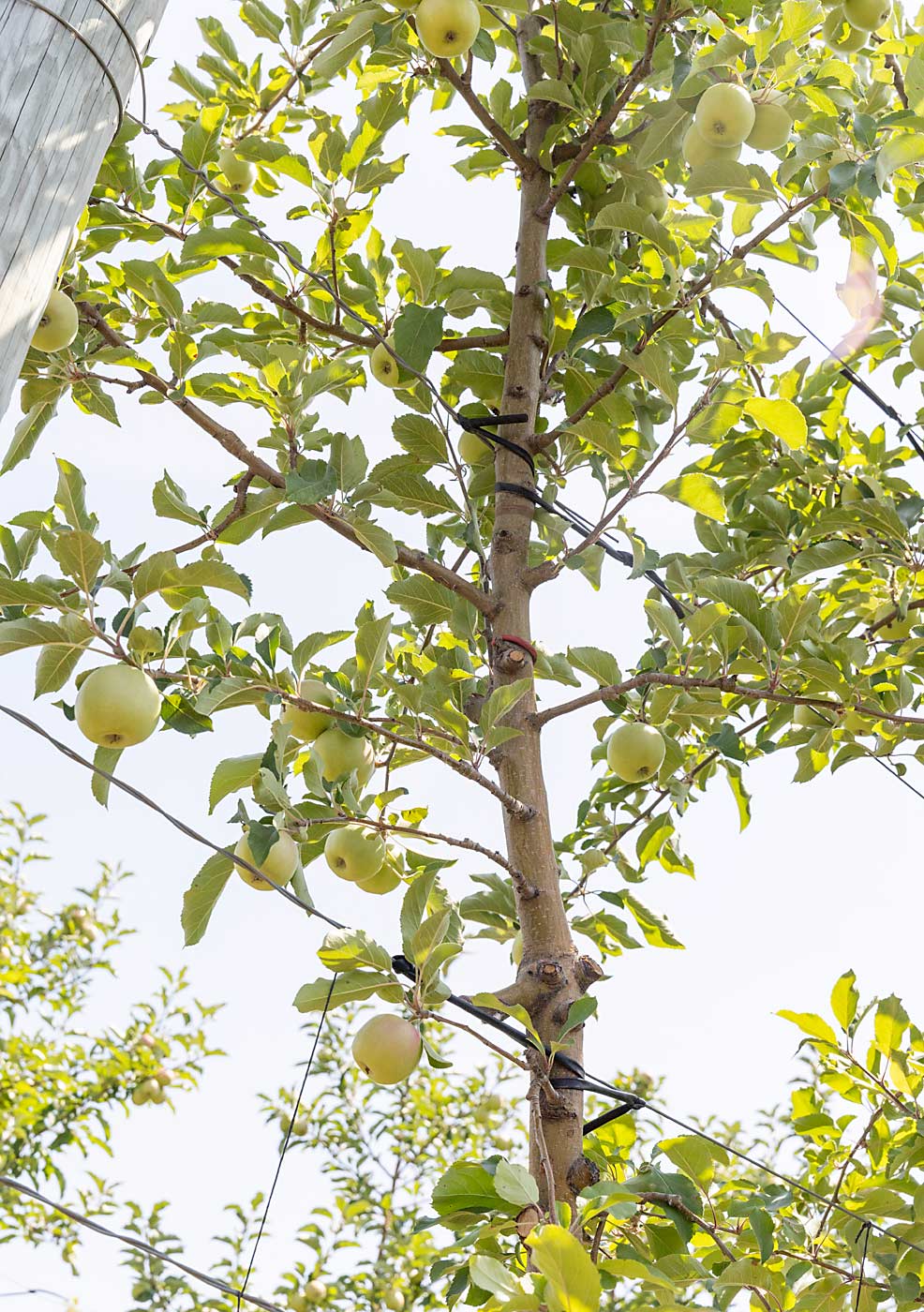
Side grafting might not work for everybody. You have to decide which graft you want, based on the structure of your tree and your vision for training it in the future. You can’t top-graft a small tree, but you can insert a small piece of budwood with a side graft. Side grafting also works well if you want a double- or triple-leader tree, she said.
Making the transition from old variety to new variety is delicate. You have to slowly remove the old branches to help the new graft grow. VanTimmeren prefers “baby steps” in which pruners take off about a third of the original canopy the first year, a third the next year and the remaining third the following year.
Umlor said he probably left too many of the Pink Lady branches on the grafted trees in the first year, which blocked some sunlight from getting to the grafts and slowed their growth.
But VanTimmeren said she doesn’t expect, or want, too much graft growth in the first year. You don’t want to push the new graft too hard early on. You want the graft to shut down with the rest of the tree to avoid winter injury.
—by Matt Milkovich

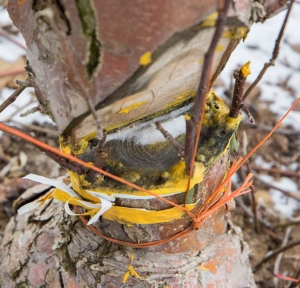
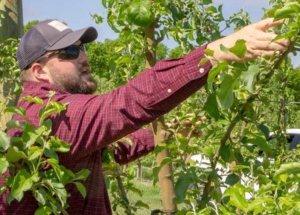





Leave A Comment